Ice Apple-a Natural Coolant to Beat Summer Heat
June 1, 2015 by admin
Filed under Tips for Ayurveda
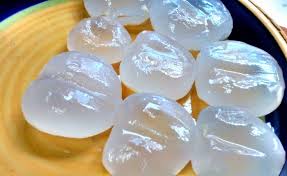 Mother Nature has gifted mankind with various ways to keep our body cool during hot summer days. That is the main reason we see plenty of cucumber, water melon, tender coconut and ice apple i.e the tender fruit of palmyra tree.
Mother Nature has gifted mankind with various ways to keep our body cool during hot summer days. That is the main reason we see plenty of cucumber, water melon, tender coconut and ice apple i.e the tender fruit of palmyra tree.
The elders take maximum care to prepare smoothies, lassi and fruit juices to make the family members feel comfortable. When out of home most of the people depend on tender coconut– nariyal pani, lime juices, pudinah pani to balance the heat and get going with the scheduled work.
The humidity is high in the air, and with getting exposed to hot waves the body sweats constantly and you can observe small red rashes, commonly known as prickly heat all over the body especially the back, neck, along the folds of hands and legs.
Ice apple / Munjalu / Thaadi Nungu is a seasonal fruit and can be found in plenty in summer. The watery fluid found inside the jelly has excellent cooling properties. The tender, pale white, translucent jelly like fruit is seasonal and is a very good alternative for body cooling. Children love ice apple for its taste and softness. Ice apple flesh is similar to the fruit litchi in texture and taste similar to coconut.
Also read: How to Overcome Common Summer Health Problems
Health Benefits of Ice Apple:
- Ice apple is rich in vitamins, iron, zinc, potassium, calcium, phosphorus, thiamin, riboflavin etc.
- Seasonal problems like prickly heat affect children and grownups alike in summer. Ice apple is an excellent remedy for prickly heat. You can actually apply the mashed jelly on the affected areas and find quick relief to that nasty itch. The soothing effect of the ice apple fights fatigue and provides immediate relief. This application needs to be continued for two to three days and the prickly heat boils will quickly vanish away.
- Pregnant women can overcome constipation and related difficulties with the help of ice apple. Improves digestion and tackles acidity problems too.
- Dieters who are on a weight loss regimen can take ice apple as it does not contain fat or carbohydrates.
- Those affected with chicken pox and measles can take ice apple regularly to bring down the intensity of the disease condition as well as aid rapid healing.
- Taking the fruit with the skin may taste a bit sour and it can heal stomach ulcers. So take a few fruits along with the skin for attaining maximum benefit.
- Ice apples helps to cool the body and helps to reduce exceeding white discharge in women.
- Ice apple is a good appetizer and it is recommended for aneamic patients too.
Various preparations of Ice apple:
The jelly part is cut to pieces and added to cool milk and honey. This preparation also called Ice apple kheer cools the body and helps tackle the hot summer.
Consumption of ice apples:
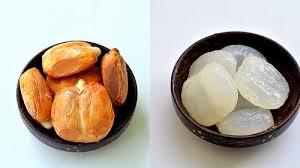 Ice apples must be consumed at once when cut as it become rubbery when stored and the sugar inside ferments changing its taste. The period is very short and the fruits usually appear in early summer.
Ice apples must be consumed at once when cut as it become rubbery when stored and the sugar inside ferments changing its taste. The period is very short and the fruits usually appear in early summer.
Ice apple has a buff color covering that has to be removed to eat the ice apple inside. Each fruit contains a small quantity of sweet water and the peeler must cut the fruit carefully to avoid the sweet water to drip away.
Ayurvedic Home Remedy-Ice apple:
Ice apple is also recommended by Ayurveda as a natural remedy to overcome summer heat and associated health problems. Take the benefits of Ice apple , beat the summer heat by consuming them fresh, this will ensure you stay away from summer problems i.e fatigue, heat strokes, indigestion and the common prickly heat.
Please add a comment and, if you like the post, feel free to share it with your friends. You can also visit our Facebook page and Google plus page for more insight on other articles.
How to Prevent Leg Cramps in Summer
May 15, 2015 by admin
Filed under Tips for Ayurveda
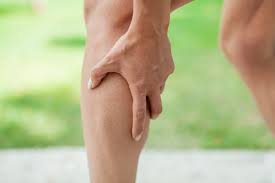 A muscle cramp is a sudden and involuntary contraction of one or more of your muscles. Muscle cramps can last anywhere from a few seconds to a quarter of an hour or occasionally longer. It is also possible for a cramp to recur multiple times until it finally goes away.
A muscle cramp is a sudden and involuntary contraction of one or more of your muscles. Muscle cramps can last anywhere from a few seconds to a quarter of an hour or occasionally longer. It is also possible for a cramp to recur multiple times until it finally goes away.
The muscle cramp may involve a part of a muscle, the entire muscle, or several muscles that usually act together, such as those that flex adjacent fingers. Some cramps involve the simultaneous contraction of muscles that ordinarily move body parts in opposite directions.
Muscle Cramps are extremely common. Almost everyone the estimate is about 95%, experiences a cramp at some time in their life. Cramps are common in adults and become increasingly frequent with aging. However, children also experience cramps.
Involuntary muscles of the various organs (uterus, blood vessel wall, bowels, bile and urine passages, bronchial tree, etc.) are also subject to cramps.
Leg cramps usually occur when you are resting – most commonly at night when in bed. (They are often called night cramps).
Also read: A Good Sleep will Make You Look Younger
This commonly happens at night in bed, as the natural position we lie in is with the knees slightly bent (flexed), and with feet pointing slightly downwards. In this position the calf muscle is relatively shortened and may be prone to cramps.
Long periods of exercise or physical labor, particularly in hot weather, may lead to muscle cramps. Some medications and certain medical conditions also may cause muscle cramps. You can usually treat muscle cramps at home with self-care measures.
Causes of Leg cramps
You may experience the leg cramp when you could be drifting off to sleep or out to run. The muscles of your calf or foot suddenly become hard, tight, and extremely painful. You are having a muscle cramp. Also called charley horses — particularly when they are in the calf muscles.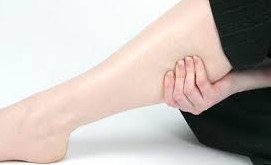
Although most muscle cramps are harmless, some may be related to an underlying medical condition, such as:
- Inadequate blood supply. Narrowing of the arteries that deliver blood to your legs (arteriosclerosis of the extremities) can produce cramp-like pain in your legs and feet while you’re exercising. These cramps usually go away soon after you stop exercising.
- Nerve compression. Compression of nerves in your spine also can produce cramp-like pain in your legs. The pain usually worsens the longer you walk. Walking in a slightly flexed position — such as you would employ when pushing a shopping cart ahead of you — may improve or delay the onset of your symptoms.
- Mineral depletion. Too little potassium, calcium or magnesium in your diet can contribute to leg cramps. Diuretics — medications often prescribed for high blood pressure — may also deplete these minerals.
In some cases, the cramps may be a symptom of another problem that is persisting. For example:
- Some medicines can cause cramps as a side-effect, or make cramps occur more often.
- Over-exertion of muscles.
- Dehydration.
- Pregnancy – usually in the later stages.
- An untreated underactive thyroid gland.
- Excess alcohol.
- Some people who have kidney (renal) dialysis get leg cramps.
- Some uncommon disorders of nerves.
In most cases the cause is not known. The unknown cause is termed as idiopathic leg cramps. One theory is that cramps occur when a muscle that is already in a shortened position is stimulated to contract. Further contract of shortened muscles may cause the muscle to go into spasm. This commonly happens at night in bed, as the natural position we lie in is with the knees slightly bent (flexed), and with feet pointing slightly downwards. In this position the calf muscle is relatively shortened and may be prone to cramps. This theory explains why stretching exercises may cure the problem.
Tips to Prevent Leg cramps
If you often get leg cramps, regularly stretching the muscles in your lower legs may help prevent the cramps or reduce their frequency.
You might find it useful to stretch your calves before you go to bed each night. The following night-time advice may also help:
- If you lie on your back, make sure that your toes point upwards –placing a pillow on its side at the end of your bed, with the soles of your feet propped up against it may help keep your feet in the right position.
- If you lie on your front, hang your feet over the end of the bed – this will keep your feet in a relaxed position and help stop the muscles in your calves from contracting and tensing.
- Keep your sheets and blankets loose.
Also read: Bedtime Yoga for Relaxation and Better Sleep
Exercises recommended for leg cramps
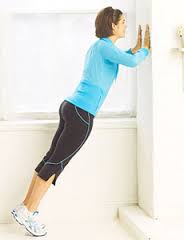 Stretching exercises are commonly advised. Most doctors feel that regular calf stretching does help. If exercises works, you will not need any tablets to prevent the cramps.
Stretching exercises are commonly advised. Most doctors feel that regular calf stretching does help. If exercises works, you will not need any tablets to prevent the cramps.
- At first, do stretching exercises of affected muscles for about five minutes, three times a day. Do the last exercise shortly before bedtime. If the cramps ease off, you may then only need to do the exercise once or twice a day to keep the cramps away.
- To stretch calf muscles, stand about 60-90 cm from a wall.
- Then, keeping the soles of your feet flat on the floor, bend forward and lean on the wall. You will feel your calf muscles stretch.
- Do this several times, each time for as long as you can manage.
It may take a week or so of exercises before you notice an improvement. So, it is worth giving yourself a 2 to 4 week trial of regular calf stretching exercises to see if your cramps ease off. The cramps may not go completely, but their frequency and/or severity may reduce. Go ahead and give a try today itself.
Ayurvedic remedies to prevent leg cramps
- Massage the muscle with Mahanarayana taila or Praharini taila to relax it. In winter season, these oils should be made warm and then applied for massage.
- Apply a cold pack to reduce the blood flow and relax the muscle.
Please add a comment and, if you like the post, feel free to share it with your friends. You can also visit our Facebook page and Google plus page for more insight on other articles.
Gargling Salt water in the Morning Improves Health
March 9, 2015 by admin
Filed under Tips for Ayurveda
Hey…this happens to be my 100th post.
 A huge thank you to all of you, yes… you who are reading this post!
A huge thank you to all of you, yes… you who are reading this post!
I cannot begin to express how delighted I am to have people interested in what I have to say, and how lovely it is to get feedback and encouragement from someone I never met in person! Blogging has helped me grow and all of you have too. I have in small ways tried to share my experiences and also health tips on various ailments as a preventive method only. Hope you liked my articles. Thanks for helping me get this far. Looking forward to our continued association, and please do support me in this journey.…
Getting back to the article scheduled today –
Gargling salt water in the morning improves dental health
Gargling of the mouth is called Gandusha. Regular gargling of the mouth early in the morning improves dental health and prevents many ailments of the mouth and teeth. Mouth gargling with salt water (lukewarm) is popular done when people are having sore throat .This is a very old home remedy practiced to address sore throat issues. The primary cause of tooth decay is bacteria and this simple oral health technique will improve dental health.
How gargling with Salt water helps you
 Gargling with salt water initiates the process of Osmosis. There is a natural tendency for a substance to move from a region of high concentration to a region of low concentration. This means that even water moves from its region of abundance to its region of shortage. Since salt water is more concentrated (less water) than the contents in your mouth (including any germs in there), when you gargle with it, it tends to draw water out of bacterial cells (which have more water in them). All cells are over 70% water and require water to function effectively and hence survive. If the salt water is concentrated enough, it will kill most germs in the mouth and some from the throat. The brine solution considerably reduces the swelling caused by the bacteria. For an effective cure the process must be repeated more often.
Gargling with salt water initiates the process of Osmosis. There is a natural tendency for a substance to move from a region of high concentration to a region of low concentration. This means that even water moves from its region of abundance to its region of shortage. Since salt water is more concentrated (less water) than the contents in your mouth (including any germs in there), when you gargle with it, it tends to draw water out of bacterial cells (which have more water in them). All cells are over 70% water and require water to function effectively and hence survive. If the salt water is concentrated enough, it will kill most germs in the mouth and some from the throat. The brine solution considerably reduces the swelling caused by the bacteria. For an effective cure the process must be repeated more often.
There is clear evidence that many diseases and conditions are influenced by the mouth’s ecology and bacteria. As we all know, the mouth is the gateway to the body. When you consider the fact that a clean mouth may have between 1,000 and 100,000 bacteria on each tooth, and those that do not have a clean mouth may have between 100 million and a billion bacteria on each tooth, surely salt water gargling will be effective.
How to Gargle with Salt Water
Salt water solution not only relieves the irritation caused due to sore throat, it also clears the nasal passage. Advised to follow on an empty stomach. Given below is the method to prepare this therapeutic saline solution.
☞ Measure 2 cups of water into a vessel which had a lid.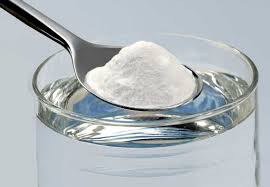
☞Heat it to lukewarm temperature
☞Add 1 tsp of salt to this water and mix until it is diluted.
☞Now gargle with a mouthful of this salt water and spit it out. Repeat this procedure several number of times to clear the infection and its symptoms.
** Please remember not to make the solution too concentrated with salt as it can dehydrate the mucous membranes in the process of dehydrating the bacteria.
To reap the benefits of gargling salt water, you must adopt it as a regular habit. This serves as a preventive measure for throat and mouth-related infections. Besides, it is advised to follow other personal hygiene habits like brushing teeth before going to bed, drinking a glass of warm water prior to bed time.
Gargle with Plain Water
Gargling with plain water is advised after meals to remove hidden particles between tooth and under the tongue. Gargling will minimize the smell of food consumed to a large extent. Few people also use mouth fresheners to prevent bad breath.
You may have observed that you rigorously gargle after brushing the teeth to remove all remnants of the toothpaste, foam.
Ayurveda approach on Mouth Gargling
Ayurveda practitioners recommend gargling of the mouth with lukewarm water removes Kapha, loss of taste, dirt, diseases of the teeth and gives lightness of the mouth. In addition to plain water gargling, there is a particularly good daily habit that benefits all people, especially Vata types, called Gandusha Snehana (oily mouthwash or oil pulling). It helps prevent tooth decay, gum disease, and keep the mouth and jaw clean and nourished. It can even treat mouth ulcers and the like. I’ll give an update about this in my next article.
Ayurvedic Tips for Balanced Living – Beneficial Daily Routines
- Rise before the sunrise.
- Drink a full glass of water ( room temperature or lukewarm water).
- Clean your face, mouth and nasal passages and gargle with salt water.
- Do some light yoga or stretching exercises.
- Meditate for 20 minutes.
- Take a walk or run for ½ hour, 3–4 times per week.
- Have a nutritional breakfast according to your body type.
- Have a relaxing or complete meal at lunchtime between 11–2 pm.
- Relax for ½ hour after lunch.
- Meditate before dinner for 20 minutes.
- Eat dinner before 7:00 pm. This should not be a heavy meal.
- Allow two hours after your dinner before going to bed.
- Bedtime 10:00–11:00 pm.
- Wind up with a Prayer to thank God.
You can reap maximum benefits by following this routine and bring a change in your lifestyle. Thank you once again for all the support you have extended for completing my 100th post.
Please add a comment and, if you like the post, feel free to share it with your friends. You can also visit our Facebook page and Google plus page for more insight on other articles.
Is it Safe to Sleep on Your Stomach?
February 9, 2015 by admin
Filed under General Advice, Tips for Ayurveda
In this busy world most of us go to bed and do not get sleep at all. Most of us keep tossing and turning and finally go to sleep in any position that the body tunes to. It can be side sleeping, sleeping on your stomach and the recommended posture sleeping on your back.
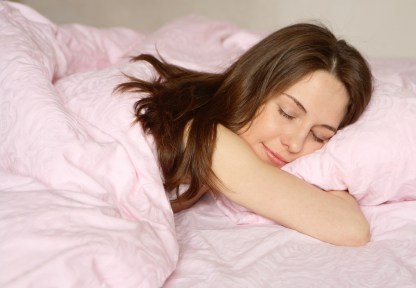 Is it safe to sleep on your stomach? The logical answer is ‘NO’. When you sleep on your stomach you may avoid snoring but you end up straining your neck and back. When you sleep on your stomach you are putting a big load on your spine which is not in recommended posture. The back pain problems will continue throughout the day and you are restless at work too.
Is it safe to sleep on your stomach? The logical answer is ‘NO’. When you sleep on your stomach you may avoid snoring but you end up straining your neck and back. When you sleep on your stomach you are putting a big load on your spine which is not in recommended posture. The back pain problems will continue throughout the day and you are restless at work too.
All pain starts with the spine
Most of the stomach sleepers experience through a lot of pain. It could be neck pain, back pain, joints pains. The pains will not provide a deep sleep, you will wake up with pricking pain and you are tired in the morning due to insufficient sleep.
When you sleep on your stomach you are straining your neck and back. As the spine is connected to the other nerves in your body, you can feel pain at any other critical joint in your body causing tingling and at times numbness too.
Neck problem
You cannot obviously breathe through your pillow and therefore force your neck to rest inclined on the pillow. This position will put your head and spine out of alignment, twisting your neck. You may not realize the negative effects immediately or after one night’s sleep in this position. With time your neck problems will become evident.
The neck problem you need to avoid is a herniated disk. That is terribly painful and this situation is when one of your spinal vertebrae has shifted enough to rupture the gelatinous disk inside it. When this gel leaks, it can irritate the nerves.
Extra care for Pregnant women
When an expecting mother goes to bed she is actually sleeping for two, that means you need quality sleep and rest. You cannot even imagine to sleep on your stomach in the latter months, you need to avoid this posture during early pregnancy too. That extra weight around the middle will increase the pull on your spine.
Your baby will get more room if not forced to squeeze in between your spine and the mattress. A medical study suggests that sleeping on your left side when you’re pregnant can increase healthy blood flow and provide the optimum oxygen levels for you and your baby.
If it has become a Habit
If you have been sleeping on your stomach all your life and despite all feedback and warnings you just cannot sleep in other position then here are some tips that will help you avoid any potential complications.
- Use a thin pillow or no pillow at all. The flatter the pillow, the less angled your head and neck.
- Put a pillow under your pelvis. This will help keep your back in a more neutral position and take pressure off your spine.
- Stretch in the mornings. A few minutes of stretching will help get your body back in alignment and gently strengthen supporting muscles. Be sure to warm up with a little movement before stretching, and be gentle!
Read: A good sleep will make you look younger
The most common symptom of an incorrect sleeping position:
- Constant tiredness, from mild to severe
- Irritability, temper and moodiness
- Loss of concentration, and in severe cases memory loss and hallucinations
- Loss of coordination, in severe cases the incidences of auto accidents increases with loss of sleep
- Problems with relationships
- Absenteeism and tardiness at work or school
- Loss of appetite or the opposite, binge-eating
- Use of prescription sleep aids that could become habitual
- Use of stimulants
Regardless of your sleep problems, a consistent sleep routine and improved sleep habits will translate into better sleep over the long term. You can address many common sleep problems through lifestyle changes and improved sleep hygiene.
Read: Bedtime Yoga for Relaxation and Better Sleep
To be rid of these disorders it is necessary to learn to sleep in the correct position. Please add a comment and, if you like the post, feel free to share it with your friends. You can also visit our Facebook page and Google plus page for more insight on other articles.
Tips to take Care of Dry skin in Winter
January 14, 2015 by admin
Filed under Tips for Ayurveda
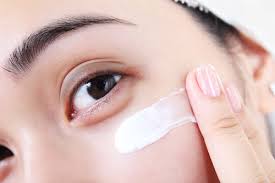 In winter your skin will be dry and at times you feel itchy due to skin dryness. When you scratch your skin you experience burning sensation as your skin is hurt due to rubbing.
In winter your skin will be dry and at times you feel itchy due to skin dryness. When you scratch your skin you experience burning sensation as your skin is hurt due to rubbing.
Our skin has small oil glands dotted all over it. The oil glands secrete a natural oil to keep our skin soft and help to prevent drying of skin. In addition the cells of skin also contain protective layer made of fats and proteins. This layer actually locks the moisture and protects our skin from harsh outside environment. When you expose your skin to harsh climate and pollution filled environment the skin is left dry. Taking long hot water shower is another major reason for skin dryness as this strips off the natural oil on skin and they can also disrupt the protective layer of fat and protein.
Ayurveda description about Dry skin
The type of skin is determined by tridoshas. The Dosha, which is dominant in skin, determines the type and quality of the skin. When Vata dosha is dominant, the skin will be dry, thin, delicate and cool (to touch). When vata dosha becomes imbalanced in body and skin , the skin becomes rough, scaly and wrinkled.
Therefore for skin care avoid long hot water showers to prevent dry skin condition. Ayurveda acharyas recommend a lukewarm water bath instead of hot water. A “just warm” water bath helps to retain the natural oil from oil glands of skin and also protect the protein –fat protective layer of skin. Warm water also balances doshas present in the skin.
Warm water bath is recommended to maintain skin texture. Warm water bath for a short time increases blood circulation through skin and helps in increased supply of essential nutrients and oxygen. It removes the dust, dirt and excess grease accumulated on skin.
You must start your day with rejuvenating, healthy, just warm water bath.
In winter when the external weather is extremely cold and chilly breeze around you can apply face packs for dry skin. Dry skin leads to wrinkles and makes a person look aged. Dry skin can be kept soft and smooth by increasing moisture level of skin. Air conditioned rooms, sun rays, harsh soaps worsen the condition.
Also read: Quick and Easy Natural Homemade Beauty Face Mask
Face packs for dry skin
- Take few slices of a ripe papaya and scoop its pulp. Mash it well and mix with honey, milk and rose water. Apply this mask and wash it off with lukewarm water after an hour.
- Mash half portion of a ripe banana and mix it with rose water. Apply this pack and wash it off with lukewarm water after 1 hour.
- Take 5 to 6 almonds and soak it over night. Mix it well with little milk and apply this pack. Wash it off after 15 minutes.
You can alternate these face packs to get a clear skin.
Also read: 6 Popular Homemade Beauty Face Mask
Few dos and don’ts for dry skin
- Take steam for face before applying face pack.
- Always wash off face packs with lukewarm water.
- Avoid air conditioned rooms and refrigerated foods and drinks.
- Drink plenty of water, fresh fruit juice and include vegetables in your diet eg: salads
- Do not take long showers especially with hot water
- Use scarves and warm clothes to cover your face and avoid chilly weather.
There are plenty of products available in the market eg: moisturizers and cold cream. Be wise and select mild , herbal varieties to prevent skin dryness.
Moisturize-Secret for dry skin care
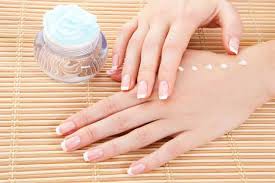 You really need to moisturize your skin. And, everyone will tell you that it is best to apply our moisturizer while your skin is still a little damp. This applies to your face, your hands, and the rest of your body. In addition to keeping in your body’s own oils, the moisturizer will also help to protect you skin as a barrier to the cold.
You really need to moisturize your skin. And, everyone will tell you that it is best to apply our moisturizer while your skin is still a little damp. This applies to your face, your hands, and the rest of your body. In addition to keeping in your body’s own oils, the moisturizer will also help to protect you skin as a barrier to the cold.
The hands actually take a bigger hit with the cold than anywhere else on your body. So, keep a good hand moisturizer around and use if often, especially if you wash your hands a lot during the days. Use hand gloves. When it’s cold outside, be nice your hands and protect them from the wind and cold.
Take great care of your skin and you will look great with skin glowing and soft.
Bedtime Yoga for Relaxation and Better Sleep
December 16, 2014 by admin
Filed under General Advice, Tips for Ayurveda
As you get closer to bedtime, you find yourself immersed in several thoughts and worries of the day. Your mind is not in a position to relax and sleep. You will toss and turn on the bed for a long time and you start getting irritated. You will fall asleep much late in the night after lying in bed for a long time. If you are going thru’ all these conditions then it is time to try a new sleep routine.
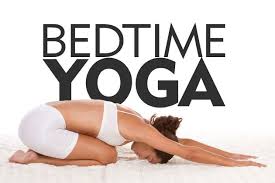 There are a number of activities you can do to fall asleep faster and sleep better. A restorative yoga routine practiced before bedtime will be ideal for both body and mind requirements. If the trouble to sleep is due to stress, yoga can help you achieve relaxation and better sleep.
There are a number of activities you can do to fall asleep faster and sleep better. A restorative yoga routine practiced before bedtime will be ideal for both body and mind requirements. If the trouble to sleep is due to stress, yoga can help you achieve relaxation and better sleep.
Yoga involves physical exercises known an ‘Asanas’ and breathing exercises known as ‘Pranayama’. The yoga ‘Asanas’, through various poses and extended stretches, build your stamina and improve your posture. ‘Pranayama’, on the other hand, improves the functioning of your respiratory system.
The most important guideline while practicing yoga is to make sure you are doing the breathing and physical exercises correctly, otherwise it will not help your body and mind. It is a good idea to warm up the body before performing Yoga like any other form of exercise.
Warming up the body maximizes blood flow to the muscles and makes the tendons more flexible and strong. The gentle warm-up exercises loosen your ligaments, which helps with performing the yoga postures and also reduces the chances of injury.
There is no single pose or yoga asana that can send you off to sleep, practice a series of yoga sleep positions that can help release any tension that may be preventing you from getting a good night’s sleep. Sleep experts also stress upon the importance of a routine before bedtime.
Also read: Simple steps of Ayurveda for Good Health
Eight most relaxing Yoga asanas /poses
Go through the eight most relaxing yoga asanas for better sleep. Do each of the yoga pose and hold for a minute, this bedtime ritual will prepare your body and mind for a relaxing night ahead. Use a yoga mat or a flat surface.
1.Thunderbolt Pose (Vajrasana) – This pose is excellent for acidity or indigestion. If stomach problems are keeping you up at night, Vajrasana can help reduce the symptoms.
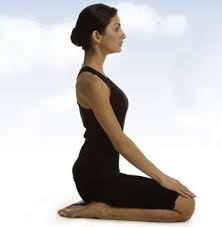
2.Downward Facing Dog Pose (Adho Mukha Svanasana) – This pose involves an inversion and it helps calm the body as well as stretch the muscles in the shoulders, calves, and hamstrings.
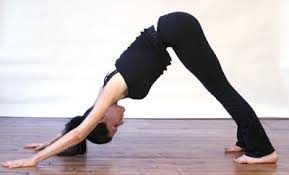
3.Child’s Pose (Balasana) – The Child’s Pose is a classic yoga pose to stretch the hips, thighs, and ankles. Any residual back pain or muscle fatigue felt at the end of the day also lessens with this pose.
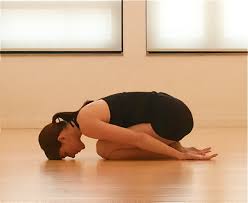
4.Goddess Pose (Supta Baddha Konasana) – This pose opens up the groin area and reduces stress stored in the leg muscles
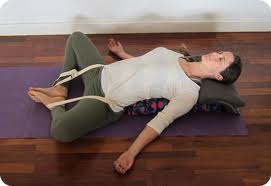
5.Legs up the Wall Pose (Viparita Karani) – The benefits of this pose include improved blood circulation and reduced pain in the lower back and hamstrings.
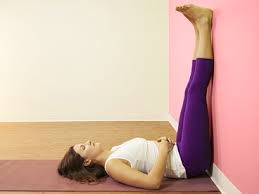
6.Crocodile Pose (Makarasana) – This relaxing asana calms the nerves and massages the heart. As your pulse rate slows down, sleep soon sets in.
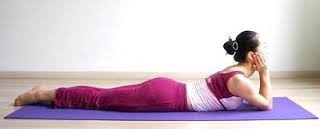
7.Seated Forward Bend (Paschimottanasana) – Best for easing tension in the spine and hamstrings.
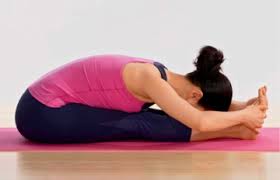
8.Corpse Pose (Savasana) – Most yoga classes end with this pose. It’s the perfect way to relax every muscle in your body and become aware of the rhythms of your breath before you fall off to sleep. Deep breathing also prevents your mind from wandering and stops the unceasing chatter in your head.
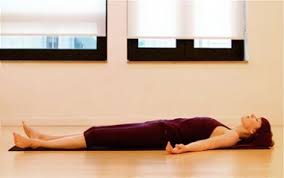
Apart from yoga exercises you could also listen to good and soothing music or chant some prayers in your mind. Follow meditation to prevent disturbed sleep patterns. Consult a yoga teacher for practicing each of the pose correctly.
Also read: Simple ways to include Ayurveda in Everyday life
In addition to yoga you can have a bath and then go to bed. The following sleep tips should help you maximize the quality of your sleep and regularize your bedtime habits.
- Keep a regular sleep schedule – it is important that you follow a regular pattern of sleep daily.
- Avoid sleeping for long during the day ,it can also interfere with your natural sleep cycle, therefore reduce your day time sleeping hours.
- Keep your bed exclusively for sleep. If you work at your bed, it will be more difficult to wind down for the night.
- Eat right and get plenty of regular exercise. Avoid having a big meal before you sleep as this can cause problems such as acidity or indigestion that can keep you up at night.
- Stay away from alcohol, caffeine and other stimulants before bed.
- Do not drink too much water before you go to sleep.
- Practice visualization and deep relaxation techniques to help you fall asleep.
Also read: Put an end to Snoring with Natural Home Remedies
You need to remember that what works for someone else may not work for you. Keep experimenting various patterns for a day or two until you hit upon the perfect combination that is most beneficial to you.
Please add a comment and, if you like the post, feel free to share it with your friends. You can also visit our Facebook page and Google plus page for more insight on other articles.
Follow the Process of Meditation in 5 Simple steps
December 8, 2014 by admin
Filed under General Advice, Tips for Ayurveda
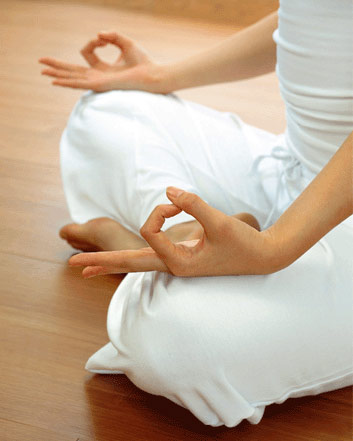 Meditation reduces stress better than any other form of exercise. By practicing meditation your body gets some time to rest physically and mentally, it also has a very direct effect on your entire nervous system by reducing your body’s production of stress related chemicals like cortisol, and increasing the production of mood enhancing chemicals like serotonin.
Meditation reduces stress better than any other form of exercise. By practicing meditation your body gets some time to rest physically and mentally, it also has a very direct effect on your entire nervous system by reducing your body’s production of stress related chemicals like cortisol, and increasing the production of mood enhancing chemicals like serotonin.
Meditation will improve your health by strengthening your immune system, reducing your blood pressure and lowering cholesterol levels. Therefore it is advised to practice meditation on a daily basis. The simple form of meditation is Still Meditation or Mindfulness Meditation, and can be done at any place whether you are at home or while you are traveling.
The ideal time for meditation is early in the morning when there is peace and freshness in the air. The family members are asleep and therefore you can allocate time without any interruptions.
-
Choose your meditation spot
Choose a private place free from external disturbances. You should feel safe, at peace and comfortable in it. If you have a bedroom to yourself, it is probably the most appropriate inside your bedroom. After you pick the spot, clean the space around it. Remove any pieces of clutter lying around.
You can opt for your bed or a mat spread on the floor. You can also use a table as a meditative altar with crystals, rocks, flowers and candles.
-
Sit in a comfortable position
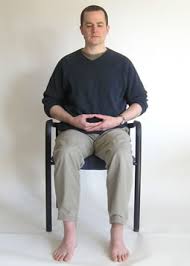 Different positions are recommended for doing meditation eg: lotus position. But you can quickly get into the habit of meditation by sitting in a cross-legged position on the bed or on the floor. This is easy and comfortable. Some people do feel the numbness in their feet when sitting cross legged. In that case you can sit directly on the chair. Whatever posture you choose, you should sit upright to facilitate the flow of energy.
Different positions are recommended for doing meditation eg: lotus position. But you can quickly get into the habit of meditation by sitting in a cross-legged position on the bed or on the floor. This is easy and comfortable. Some people do feel the numbness in their feet when sitting cross legged. In that case you can sit directly on the chair. Whatever posture you choose, you should sit upright to facilitate the flow of energy.
-
Clear your mind
Free your mind, clear of all thoughts. Loosen yourself up. Take a few deep, slow breaths.
-
Sit back and observe
Now it is time to close your eyes, simply sit back and observe the inner dialogue playing in your mind. Let them float by. Just observe, don’t engage.
Many people probably think that in meditation, they have to force themselves not to think and block out all their mental thoughts. It is really quite the opposite. You let your mind continue to think, but you don’t engage. You take the role of a passive observer and watch them from the back of your head.
Say for example, if you have a sudden thought that says ‘I need to pay the bills tomorrow’, observing it means knowing that particular thought is there. If you proceed to react from the thought, such as feeling annoyed that you have to pay the bills, or thinking about the budget and monetary arrangements, you are engaging with the thought. Don’t do that. Your desired state in meditation is to observe these thoughts, not engage with them.
One way of detecting when your focus breaks is to count slowly from 1, 2, all the way to 10. Repeat when you reach 10. Each time your focus is deviated, take note of the last number you were reading – this is an indicator of how long you held you focus. Try again, restarting from 1, and try to go beyond the last number this time.
The presence of these thoughts during meditation means they are being cleared. These thoughts have always been present in your mind, you are just not aware since there are so many thoughts screaming for attention inside your head! And now through meditation, they are clearing out, one by one. After repeated meditations, you will gradually reach a new level of mental Zen-like quietness. If you think your mind seems quiet now, try meditating a few days in a row – you’ll notice a new found mental peace.
Meditate for as long as you want, till you feel cleansed, purified, refreshed and good to go. For a start 20 minutes would be ideal. If you want to meditate longer, that’s even better.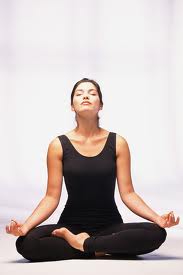
-
Ending Your Meditation
When you are done with your meditation, slowly ease into the physical state. Start off by being present of the physical reality around you. Next, be aware of your physical body. This can take 15~30 seconds, or however long you need to do this step. Then, very slowly, open your eyes. Get attuned to your surroundings. If you open your eyes immediately and try to resume your physical activities, it might be disjointing and jarring.
Instead of resuming your physical activities immediately, you might want to continue sitting in the meditative spot and reflect upon some of the thoughts, or images that came up during your meditation. You may also want to just spend a few minutes expressing gratitude towards the things you enjoy in your life.
Watch outs while doing Meditation
Do not fall asleep during the process of meditation. Staying awake is one of the largest difficulties for individuals who are new to meditation since there is no active stimulus to keep you engaged.
Preferably meditate after a good rest. Your meditations will be more focused at an alert state. Once you successfully let the thoughts be cleared, you will emerge from the meditation more energetic instead – since your clutter is removed and your mind is now fresh.
Do not engage with negative feelings and thoughts. Recognize these feelings and thoughts, do not engage with them and continue to maintain in your meditative stance. Once you get past the point with the most resistance, you will ease into the meditative state very naturally.
The benefits of meditation include:
Stress Reduction, Improved Health, Improved Sleep, Slowed Aging, Emotional Stability & Positive Thinking, Happiness!
People who meditate are less stressed, healthier, they sleep better, and they have a more positive outlook on life. To summarize, meditation makes you a happier person!
Meditation is not just for relaxation. Its primary purpose is to develop the capacity to develop skillfully and gracefully to life’s difficulties and joys.
Please add a comment and, if you like the post, feel free to share it with your friends. You can also visit our Facebook page and Google plus page for more insight on other articles.
3 Popular Natural Remedies for Psoriasis
November 18, 2014 by admin
Filed under Tips for Ayurveda
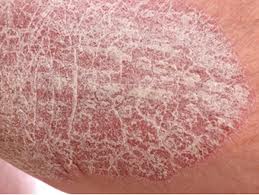 If you are looking for natural remedies to cure Psoriasis then you are at the right place. Listed below are 3 quick and popular natural remedies for psoriasis.
If you are looking for natural remedies to cure Psoriasis then you are at the right place. Listed below are 3 quick and popular natural remedies for psoriasis.
About Psoriasis:
Psoriasis is a non-inflammatory disease of the skin. Reddish plaques are seen with silvery scales. The main abnormality observed in people suffering with psoriasis is increase proliferation of skin layers due to excessive division of cell in the basal layers of the skin. Severe itching is observed at the areas of plaque, especially when idle. Dryness of skin and silvery scaling are phenomenal in this condition.
Exact causes for Psoriasis are not known. However deprivation of sunlight influences this condition and mental stress plays an important role in aggravating the condition. A person affected with Psoriasis must maintain a status of mental calmness.
Alcohol and Tobacco consumption acts as a catalyst. Silent smokers needs to be careful by avoid stuffy rooms and areas where smokers visit.
Also read: Ayurvedic treatment for Psoriasis
Food that aggravates Psoriasis:
Irregular food habits, consumption of food stuffs that cannot be eaten together for eg: dairy products with fish, excessive intake of yogurt, black gram, sea food, sour and salted items etc. can activate the ailment. Ayurveda suggests Panchakarma for effective treatment of Psoriasis. Basic principle is to detoxification of the body or elimination of toxins from the body fluids. This process will go for 5 to 7 days and has to be conducted at an Ayurvedic centre.
Also read: Ayurvedic tips and Diet for Psoriasis
It is very important to begin treating the condition as soon as possible with the best Natural home remedies for Psoriasis. Application of creams and lotions can be risky at times due to the presence of steroids to tackle the skin problem quickly.
Mostly the drugs and creams will give a temporary solution only and nothing on long term effectiveness. Listed below are 3 popular and natural home remedies for psoriasis.
Olive Oil: Olive oil is the most beneficial home remedy to cure Psoriasis. Olive oil should be warmed up and applied over the scales and thick plaques. Application of olive oil will moisten skin and the plaques and scales will quickly fall off. Olive oil is quickly absorbed by the skin and your skin looks great.
Honey: Honey is popular in skin care and is a popular home remedy for Psoriasis. You should pick the organic variety to avoid any itching / allergy problems. Apply a light layer of honey on the patches and observe the difference. Honey helps to minimize itching and quick healing.
Oatmeal Bath: Oatmeal bath is popular for its success criteria in healing Psoriasis. You can add oatmeal to your bath tub or into the bucket of water. Allow your body to soak in it for 15 to 20 minutes. This will remove itchiness and your skin will see the difference of the wonderful affects of skin.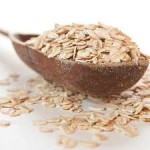
You can apply olive oil as a moisturizer after an oatmeal bath.
It is important to take good care of your skin. Do not irritate skin further, follow natural home remedies and see the difference.
Please add a comment and, if you like the post, feel free to share it with your friends. You can also visit our Facebook page and Google plus page for more insight on other articles.
Why must Few Medications be Taken Along with food?
October 30, 2014 by admin
Filed under General Advice, Tips for Ayurveda
 I was surprised to hear that the doctor has prescribed medication to be taken along with food. I repeated the query to verify if what I heard was correct. This thought kept bothering the whole day and upon searching the net and got few answers. Summarized the findings:
I was surprised to hear that the doctor has prescribed medication to be taken along with food. I repeated the query to verify if what I heard was correct. This thought kept bothering the whole day and upon searching the net and got few answers. Summarized the findings:
Why Some Medications Should Be Taken With Food
Some drugs, like ibuprofen or aspirin, can irritate the stomach lining if you take them when you’re empty. So, they really need your meals in there to act as a cushion.
You need to simply follow the instructions as mentioned on the label of the medication or as prescribed by the doctor.
If the label mentions,” Take with Food” you need to have the medication during the meal.
Other medications, like those for blood pressure, mix up with the food so they can move very slowly into your system, to get their full effect.
If your label of the medication says, “Take on an empty stomach,” that’s a drug that doesn’t want any competition from food. You should take the tablet one hour before eating, or wait two hours after a meal.
Also observed that few people prefer to swallow the pill without water. Water or some liquid is essential to wash it down, and help it dissolve in your stomach. A glassful of water is ideal but if you are in a big rush, few gulps of water will do.
Why do we need to eat before consuming ‘some’ medicines?
Some medicines can irritate the inside of the stomach, eating something first minimizes this. Some medicines such as aspirin, can be quite harsh on an empty stomach, particularly if it sits in one spot in the stomach while being absorbed. Food acts like a diluent to spread the aspirin around so that it is absorbed more slowly, and spreads it to different parts of the stomach. Food aids the absorption of the specific medication .
Some medicine, like penicillin, need to be taken on an empty stomach, so that they are not competing with the food to be absorbed, or being changed by interaction with the food.
This is not a rule that must be applied to all medication, it is important to follow the instructions given on the label or leaflet coming with your medication. Some medication must be taken on an empty stomach.
Why must some medicines be taken with or after food?
Some medicines need to be taken with or after food. The six main reasons for this are outlined below.
1 – To reduce side effects of nausea or vomiting
2 – To reduce side effects of stomach irritation, including indigestion, stomach inflammation or ulcers
3 – To treat problems such as heartburn, reflux or indigestion
4 – To ensure the medicine is not washed away
5 – To ensure the medicine is absorbed into the blood stream properly
6 – To help the body process the meal
Medicines for diabetes, if taken by mouth, should usually be taken around meal times to reduce blood sugar levels after eating, and to avoid hypoglycemia (very low blood sugar).
Ayurveda, the science of life also advocates having meals on time and follow the instructions of the vaidya. Walking is essential after meals for good digestion.
Remember, if you have questions about your medication…you can always ask your doctor or the pharmacist for advice!
Please add a comment and, if you like the post, feel free to share it with your friends. You can also visit our Facebook page and Google plus page for more insight on other articles.
Which is the best time of the day to walk? Is it morning or evening?
September 19, 2014 by admin
Filed under Tips for Ayurveda
Many have this query …which is the best time of the day to walk? Is it morning or evening?
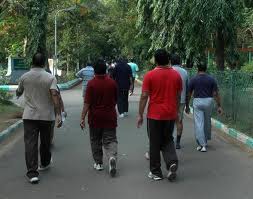 Morning walk is certainly better than Evening walk mainly due to the reason that the air is less polluted, we will breathe fresh air which is helpful for our body. There is oxygen abundantly available in the air as plants produce oxygen in the presence of sunlight.
Morning walk is certainly better than Evening walk mainly due to the reason that the air is less polluted, we will breathe fresh air which is helpful for our body. There is oxygen abundantly available in the air as plants produce oxygen in the presence of sunlight.
Popular saying: An early morning walk is a blessing for the whole day-Henry David Thoreau
Morning walk is better than Evening walk
There is a huge difference in doing morning walk and evening walk. It is proven that most morning walkers have reduced attraction to food hogging , strictly follow diet and they are able to complete more activity in the remaining part of the day. The main benefit for morning walking is that it raises your heart rate and metabolism to burn calories earlier in the day. Morning walk improves mental ability and sharpness. There are fewer distractions and the exercise will keep you active throughout the day.
In the evenings the air becomes polluted and lot of traffic also is on the roads. You cannot always find time in the evenings especially due to personal engagements in the family and after work it is sometimes impossible due to stress or extended work schedules. Plants produce Co2 in the evenings and therefore there is lack of fresh air. However if you are staying in colonies-gated communities the effect of pollution will be lesser and therefore you can plan for an evening stroll maybe after dinner.
Indoor exercises can be recommended in the evenings as for most people, body temperature and hormone levels peak at 6 p.m. Exercising 2 to 3 hours before or after the peak will give your best workout for both stamina and building muscle. In the evenings the muscles are warm and flexible.
The Best Time to walk
There are no repercussion by walking. Walking can only do you good. The best time to walk is the time that will fit best into your schedule so you can do it consistently. Experts agree — it is not the time of day that matters as much as finding the time you can set aside consistently for your exercise and workouts.
Weather conditions also have to be considered. When it is raining you can think of different ways- maybe walking in the corridor of your flat.
Also read:Gargling Salt water in the Morning Improves Health
Make walking a habit-a rhythm
 I know of people who use steps rather than a lift even if they have to go 3 to 4 floors . To remain healthy each one of us must exercise. Whether you choose to walk in the morning or the evening, it is best to decide on a time of day that you can stick with so it becomes a habit. Finding a time when you feel energized, either morning or evening, and when it’s convenient for you will help you stick to your exercise routine.
I know of people who use steps rather than a lift even if they have to go 3 to 4 floors . To remain healthy each one of us must exercise. Whether you choose to walk in the morning or the evening, it is best to decide on a time of day that you can stick with so it becomes a habit. Finding a time when you feel energized, either morning or evening, and when it’s convenient for you will help you stick to your exercise routine.
If you try to plan your walking regimen when it’s difficult to enjoy because your brain isn’t awake yet or has started to shut down for the night, it will be a struggle to get out and walk regularly. Listen to your body’s natural rhythm to determine the best time of day for your brisk walk.
Ayurveda, the science of life also advocates on walking in the morning, infact before the sunrise. Practice yoga and meditation to keep away stress and depression.
Recommended duration for walking
Regardless of what time of day you schedule your walk, the recommendation is that you walk briskly for 30 to 60 minutes at least five days a week.
Increase your distance and duration of walking gradually. Start with a warm up. Wear proper footwear to prevent pains and slips. You can walk fast for 2 minutes and then slow down for a minute to ensure heart rate. Brisk walking will be advantageous for people looking out for weight loss. However consult your doctor and decide on the duration of walk and the speed you need to follow.
Do not expect result in a day. Whatever time of the day you chose to walk make it a habit, a daily routine and the benefits of the new schedule will be reflected in your health and energy levels.
So why wait…get going!!
Please add a comment and, if you like the post, feel free to share it with your friends. You can also visit our Facebook page and Google plus page for more insight on other articles.







